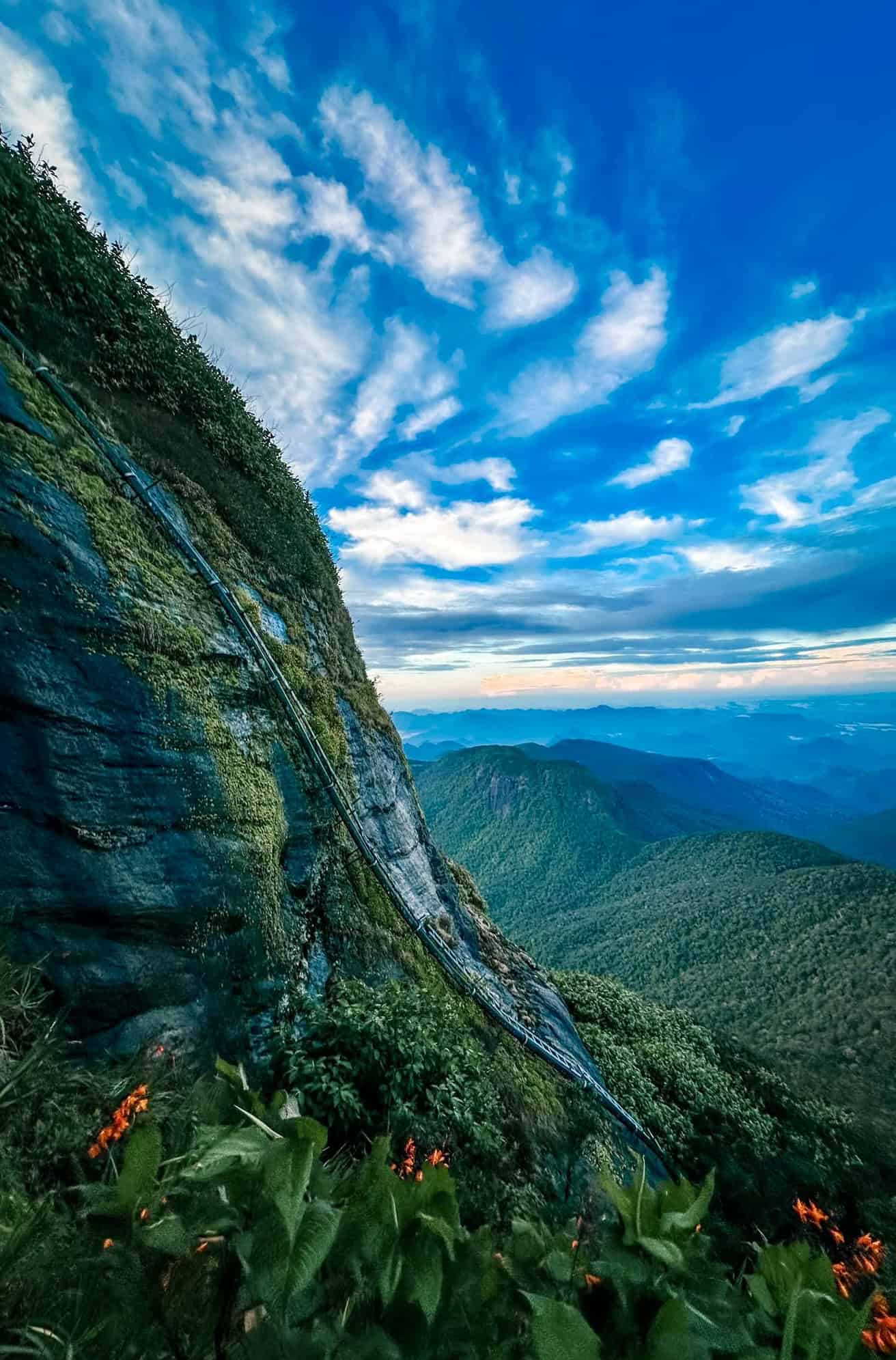✅ Introduction
Standing tall at 2,243 meters, Adam’s Peak (Sri Pada) is one of Sri Lanka’s most sacred and scenic destinations. The mountain is famous for the mysterious footprint at its summit. This footprint is believed by Buddhists, Hindus, Muslims, and Christians to hold divine significance. This mountain invites both spiritual seekers and adventure lovers. Whether you’re chasing sunrise views or inner peace, this unforgettable climb connects your soul to nature.
📚 Historical Background :
The Sacred Footprint is what truly sets Adam’s Peak apart. According to Buddhist tradition, it’s the mark of Lord Buddha. Meanwhile, Hindus believe it’s the print of Lord Shiva. In contrast, Muslims say it’s where Adam first stepped on Earth, while some Christians attribute it to St. Thomas the Apostle.
This reverent site has been a destination for pilgrims for over 1,000 years. Historical chronicles, such as the Mahavamsa, describe kings, monks, and travelers making the journey. It’s rare to find a single place where such diverse faiths find shared meaning.
🌍 Present-Day Relevance
From December to May, the pilgrimage season transforms the mountain paths into glowing trails of light, chant, and community. Locals along the way offer herbal tea, warm snacks, and blessings. As you walk, you’ll hear age-old gatha (chants) that echo through the night air.
The goal? Reaching the summit before dawn. The sunrise over a sea of clouds is not just a photo moment—it’s an experience that stirs the soul.
However, the mountain’s growing popularity brings ecological concerns. Littering and trail erosion now threaten the delicate balance. Responsible travel—like packing out trash and avoiding single-use plastics—is vital to protect this sacred site.








🧭 Travel Guide – Clearer Formatting for Skimmability
Best Time to Visit:
🗓️ December to May (dry season/pilgrimage time)
🌧️ Avoid June to October (heavy rains)
Popular Routes:
- Hatton (Nallathanniya) – Most popular and shortest
- Kuruwita – Quieter, traditional trail
- Ratnapura – Longest and most scenic
Hike Duration:
⏱️ Ascent: 2–4 hrs | Descent: 1.5–3 hrs
Top Tips:
✅ Start around 2 AM for sunrise
✅ Wear warm layers—mountain tops are chilly
✅ Bring flashlight/headlamp, snacks, reusable bottle
✅ Stay humble—remember it’s sacred ground
🛏️ Where to Stay (Formatted for Scanning)
📍Nallathanniya Village – Closest base near Hatton Route
- Budget: White House Guest Inn, Daddy’s Guesthouse
- Mid-Range: Slightly Chilled Hotel, Wathsala Inn
- Eco-Friendly: Green House Hotel, River Side Nature Resort
🧘♂️ Spiritual Experience Section – Elevated Emotionally
Climbing Adam’s Peak isn’t just a trek—it’s a rite of passage. As your feet meet ancient stone steps, you’re walking alongside centuries of devotion. The hush of the night, broken only by soft chants and bells, creates a sacred rhythm. When dawn breaks and the triangular mountain shadow stretches across the clouds, something inside you stirs. This is why pilgrims return. The mountain not only offers a view—but a vision.
🗺️ Nearby Attractions – More Descriptive
- Laxapana Falls – Towering cascade, perfect for cooling down post-hike
- Makara Thorana – Intricately painted gateway with deep spiritual symbolism
- Bogawantalawa Valley – Tea country trails with misty magic
- Maskeliya Reservoir – Ideal for peaceful reflection or photography
- Sinharaja Rainforest – Biodiversity hotspot for eco-tour lovers
📣 Final Call to Action (Enhanced)
🌄 Adam’s Peak isn’t just a climb—it’s a calling.
Whether you come for the sunrise, the sacred footprint, or something you can’t yet name, this mountain will influence your soul. It will leave a mark on your spirit.
Ready to start your journey?
👉 Discover More Sacred Travel in Sri Lanka:
🔗 https://srilankatravelparadise.com/chasing-sunrise-and-spirit-the-magic-of-climbing-adams-peak/
📺 Watch Pilgrimage Moments on YouTube:
🔗 YouTube.com/@SriLankaTravelParadise

















